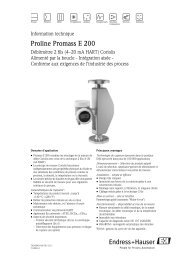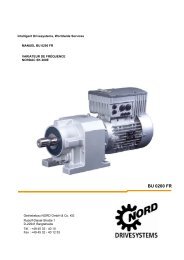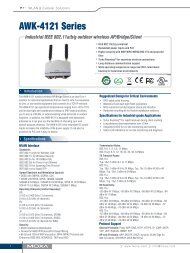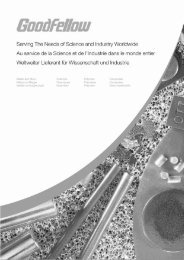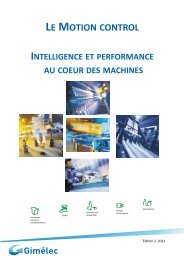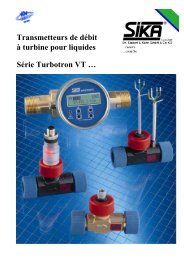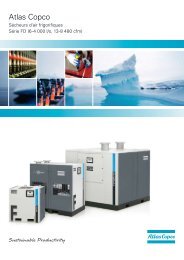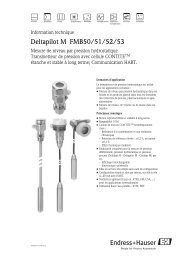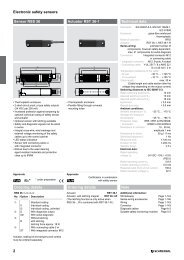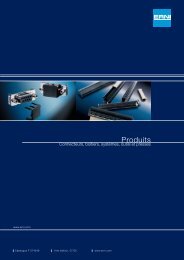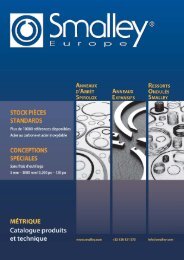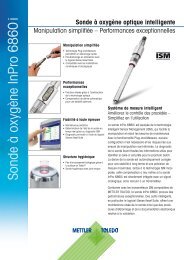Flexible Heaters Design Guide - BiS Sistem
Flexible Heaters Design Guide - BiS Sistem
Flexible Heaters Design Guide - BiS Sistem
You also want an ePaper? Increase the reach of your titles
YUMPU automatically turns print PDFs into web optimized ePapers that Google loves.
Frequently Asked Questions<br />
Introduction <strong>Design</strong><br />
<strong>Guide</strong><br />
Polyimide<br />
<strong>Heaters</strong><br />
Silicone<br />
Rubber<br />
<strong>Heaters</strong> (foil)<br />
Standard<br />
Polyimide<br />
& Rubber<br />
Rubber<br />
<strong>Heaters</strong><br />
(wire-wound)<br />
Mica <strong>Heaters</strong> Thermal-Clear<br />
<strong>Heaters</strong><br />
All-Polyimide<br />
<strong>Heaters</strong><br />
Sensors,<br />
Controllers &<br />
Accessories<br />
Reference<br />
What is the correct voltage for this heater?<br />
Standard heaters are specified by resistance, not voltage. This<br />
lets you operate them at different power levels. In selecting a<br />
heater model you should consider the size, resistance, operating<br />
temperature, total wattage and watt density (watts/in² or<br />
watts/cm²) for your application. The watt density rather than<br />
the total wattage determines the maximum applied voltage.<br />
Maximum watt density depends on the insulation type, mounting<br />
method and operating temperature. Graphs of these limits<br />
are included in each product section of this bulletin.<br />
Minco standard and stock wire-wound silicone rubber heaters<br />
are listed with a recommended voltage based on typical<br />
ambient conditions and operation.<br />
It is often possible to exceed the listed limits. Contact Minco for<br />
more information if your application requires more power than<br />
the standard limits allow.<br />
Can a Thermofoil heater be used suspended<br />
in air?<br />
Because the mass of a Thermofoil heater is very small they are<br />
generally not suitable for heating in air. Thermofoil heaters<br />
operate best when mounted to an object that can be heated<br />
by conduction rather than convection or radiation.<br />
What are the dimensions of the lead attachment<br />
area for standard heaters?<br />
The size of the non-heated lead attachment area varies based on<br />
the leadwire size, insulation material, lead exit location and heater<br />
dimensions. For a polyimide (e.g. Kapton) insulated heater these<br />
range from 0.25 × 0.30" (6.35 x 7.62mm) to 0.5 × 0.8" (12.7 x 20.32<br />
mm) for sizes AWG 30 to AWG 20. Describe your space limitations<br />
when specifying a custom design. Leads can be attached to a<br />
non-heated tab outside the body of the heater.<br />
What is the dielectric strength of each different<br />
insulation material?<br />
Minco standard heaters with polyimide, silicone rubber or mica<br />
insulation are tested to verify 1000 VAC minimum dielectric<br />
breakdown voltage. We can provide custom models with thicker<br />
insulation to increase the dielectric rating, but this will reduce the<br />
maximum power and temperature ratings for the heater.<br />
Another consideration is the amount of dielectric leakage current<br />
at operating voltage. Because an etched element covers 50% or<br />
more of the heater surface area, it can act as a capacitor when AC<br />
power is applied. The result is a leakage due to the capacitive<br />
effect. This is not a failure of the insulation but it may exceed the<br />
very low limits required for some medical and other applications.<br />
Minco can use special design techniques to minimize this leakage<br />
if your application requires meeting tight limits.<br />
What is the temperature coefficient of resistance<br />
(TCR) for Minco heater elements?<br />
Standard etched element heaters (except resistance options<br />
listed under the “NiFe” and “Ni” columns) use very low TCR foil<br />
materials. These can be considered to have a flat resistance to<br />
temperature relation for most applications.<br />
Etched element heaters under the “NiFe”and “Ni”columns use<br />
either nickel (0.00672 Ω/Ω/°C) or nickel-iron (0.00519 Ω/Ω/°C) foil.<br />
Thermal-Clear heaters use copper wire (0.00427 Ω/Ω/°C), nickel<br />
wire (0.00672 Ω/Ω/°C), or nickel-iron wire (0.00519 Ω/Ω/°C). These<br />
higher TCR models are not self-limiting but can be used with<br />
Minco's <strong>Heaters</strong>tat controller where the heater element performs<br />
the sensor function.<br />
Go to the "Engineering Tools" section at www.minco.com/e2e<br />
to calculate resistance versus temperature for these heaters.<br />
Can I immerse these heaters in water or other<br />
liquids?<br />
Generally the answer is no. The materials used in Polyimide<br />
insulated Thermofoil heaters are waterproof, but edges are not<br />
sufficiently sealed for immersion. Custom designs (including all<br />
PTFE heaters) can include increased border areas and sealed<br />
leadwire connections that make these heaters immersible in<br />
water. Silicone rubber insulated heaters require RTV cement or<br />
similar materials along all exposed edges and leadwire attachment<br />
areas for immersion in water.<br />
If your application requires contact with other liquids contact<br />
Access: Minco Sales and Support with details and we can help<br />
design a solution.<br />
Can I trim a Thermofoil heater to the size and<br />
shape I need after I've received it?<br />
No- Thermofoil heaters cannot be cut or trimmed. The element<br />
conductor covers the entire area to maximize the heat spreading<br />
effect of the etched-foil design. Cutting into this would create an<br />
electrically open circuit and expose the electrically live element.<br />
When would I specify aluminum foil backing for<br />
a heater?<br />
Foil helps to spread heat between heater strands, improves<br />
adhesion of PSA, and makes polyimide less springy for better<br />
conformance to curves. It increases the temperature and watt<br />
density ratings of polyimide heaters with PSA. For silicone rubber<br />
heaters, foil with acrylic PSA is less expensive than #12 PSA<br />
applied directly to the rubber.<br />
56<br />
Sal es and Support<br />
|<br />
Americas: 763.571.3121 | Europe: (33) 5 61 03 24 01 | Asia Pacific: (65) 6511 3388





